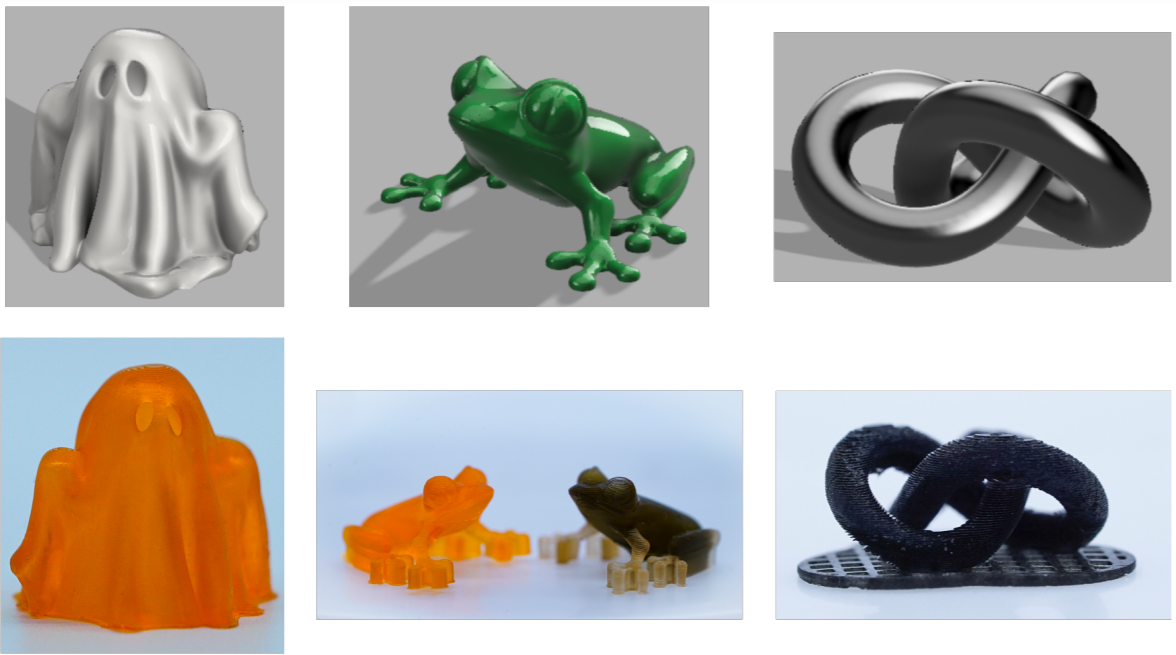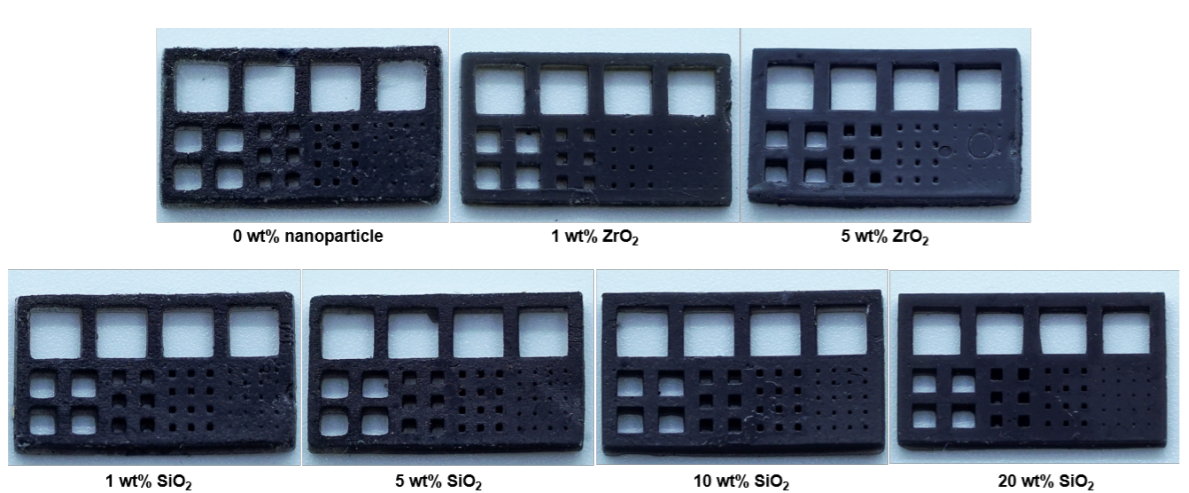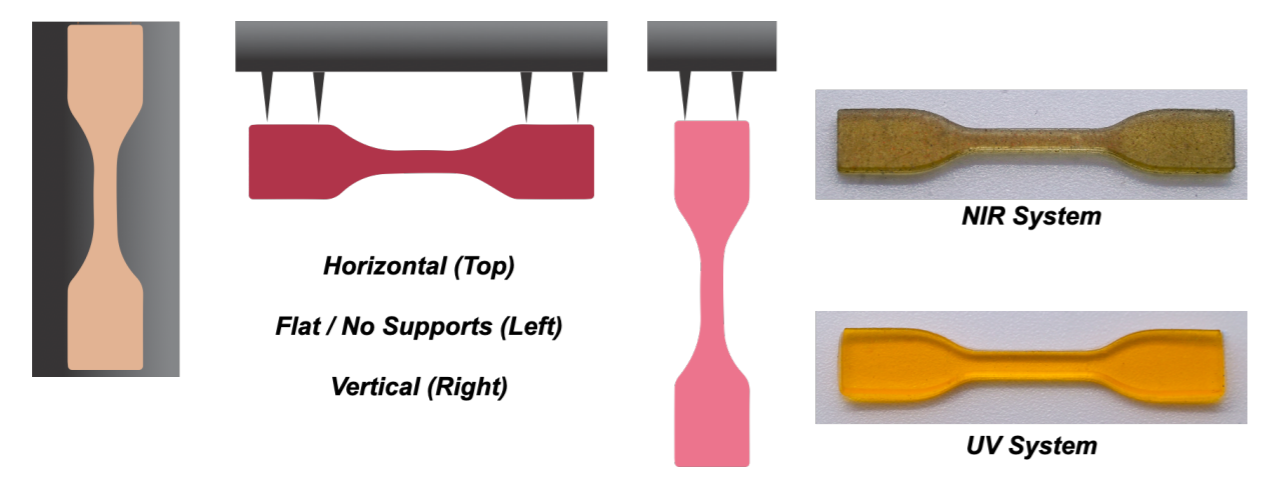Researchers from the University of Texas at Austin have published a paper exploring the use of Near-Infrared (NIR) light within light-based 3D printing technologies in favor of violet and ultraviolet (UV) light.
The proof-of-concept study sought to cure nanoparticle-infused resins with NIR light in order to enable the 3D printing of structures, like biomaterials and composites, that are typically challenging to produce using current light-based 3D printers.
According to the researchers, the study successfully demonstrated improved feature fidelity for structures produced with NIR compared to UV light, and provides insight to inform the development of “next-generation” light-based photocuring technologies.

Advances in DLP 3D printing
In particular, the researchers focused on DLP 3D printing during the study, an area that is seeing increasing attention and development.
In April last year, high-precision optical device developer In-Vision launched its first 4K UV light projector for use within resin-based DLP 3D printers, shortly before Essentium made its DLP 3D printing debut with the acquisition of Collider. Collider’s patent-pending technology combines DLP with injection molding to produce low-volume, high-strength parts for the automotive, aerospace, and medical sectors.
Elsewhere, DLP systems and materials producer EnvisionTEC was acquired by binder jet 3D printer manufacturer Desktop Metal in a $300 million deal in early 2021, representing the latter’s entry into the DLP market. More recently, EnvisionTEC announced a partnership with polymer 3D printing specialist Covestro to provide new material and printer combinations for DLP tooling applications.
Meanwhile, at Formnext 2021, trade show newcomer AXTRA3D caused waves with its new Hybrid PhotoSynthesis (HPS) technology that harnesses the benefits of DLP, SLA and LCD 3D printing in a single machine. The HPS platform enables DLP and SLA to work at the same time, on the same wavelength, with the same energy to remove trade-offs between print speed and resolution, or print area and surface quality, for light-based 3D printing.

Leveraging NIR within DLP 3D printing
High-intensity, short-wavelength UV light is the present-day standard used in most light-based 3D printing technologies like DLP and LCD. However, pervasive absorption, scattering, and degradation can occur to 3D printed samples when exposed to UV, meaning the current breadth of materials compatible with such processes is somewhat limited.
While some techniques have recently extended DLP printability to orange or red light, these are plagued by another issue; as the wavelength of light increases, so do the inherent challenges to match the speed and resolution of photocuring via traditional UV-based methods.
To address these concerns, and to expand the materials scope of such light-based systems, the researchers sought to demonstrate a photosystem that enables low-intensity, long-wavelength NIR light-based 3D printing. The researchers used NIR light within the wavelength range of 400-780 nm to produce nanoparticle-infused 3D printing resins with significantly reduced scattering and absorption effects.
Through combining an NIR-absorbing cyanine dye with electron-rich and electron-deficient redox pairs, the researchers achieved catalytic rapid photocuring. The team rigorously optimized the resin composition and printing parameters to balance the speed of the process at less than 60 seconds per layer, with a feature resolution of less than 300μm.
The team also included carbon black as an opaquing agent in order to achieve small features, such as 100 μm lateral features and 25μm vertical features at exposure times of less than 60 seconds per layer.

The researchers then characterized the rate of polymerization and time to solidification upon exposure to NIR light via in-situ spectroscopic and rheological monitoring. The end result saw the team successfully achieve composite NIR-based DLP 3D printing with nanoparticle-infused resins to deliver structures with improved feature fidelity over those produced with UV.
Although a proof-of-concept, for now, the researchers believe their study provides key insight to inform next-generation light-based photocuring technologies, and potentially enable wavelength-selective multi-material 3D printing of biomaterials and composites.
Going forwards, the researchers identified that future research must focus on identifying NIR light-activated resin compositions with extended shelf-life stability, and on improving the photocatalyst design to achieve NIR-based curing at 10 seconds per 100 μm layer.
Further information on the study can be found in the paper titled: “‘Invisible’ digital light processing with 3D printing with near infrared light,” published in the Applied Materials and Interfaces journal. The study was co-authored by L. Stevens, C. Tagnon, and Z. Page.

Subscribe to the 3D Printing Industry newsletter for the latest news in additive manufacturing. You can also stay connected by following us on Twitter and liking us on Facebook.
Looking for a career in additive manufacturing? Visit 3D Printing Jobs for a selection of roles in the industry.
Subscribe to our YouTube channel for the latest 3D printing video shorts, reviews and webinar replays.
Featured image shows miscellaneous 3D prints, digital file top, experimental print bottom, using custom resins. Image via University of Texas at Austin.



